A field near Lucan, February 7th, 2005
Bertie Ahern is standing in a field near Lucan, wearing a yellow hard hat for the cameras. The economic crash, which is shortly to plunge the country into deep recession, becomes unstoppable at some point this year, a banking inquiry years down the road will hear.
But the taoiseach is presumably not thinking about this as he lays the first stone of what is to become Adamstown, Ireland's first "designer" town since Shannon was built.
The climate in 2005 is still one of optimism and ambition. Everyone is thinking big about everything, and that includes Adamstown. The €2 billion development is to be "a realistic high-density, mixed-use, public-transport-based alternative to the low-density, mono-use, roads-based development of the suburban areas of the county to date", senior planner Paul Hogan tells this newspaper.
The town that will rise rapidly from these featureless west Dublin fields is envisaged by Hogan as “a lively and interconnecting network of streets, squares and public gardens”. It will grow, estimates suggest, to 10,000 houses and 25,000 residents within 15 years, and offer an idyllic place to live.
Adamstown, 2006
The first houses go on sale in a development with a decidedly European feel. There are long queues for the neat units in developments that are three or four storeys high. In two days, 330 homes sell.
Adamstown, May 2012
Just in excess of 1,200 homes in Adamstown are now occupied. A BBC journalist visits and declares that it “symbolises the ambition, and subsequent puncturing, of the Irish economic dream . . . It’s as if a pause button has been pressed . . . Other than a postman, a pair of council workers mending a pavement and a solitary jogger, the place seems empty.”
Adamstown Community Centre, 10am, January 28th, 2020
On an icy Tuesday morning, a stream of buggies arrive at the Adamstown Community Centre for a mother and baby group. A free language class is taking place in a classroom next door to where the group is meeting, and across the corridor, students from the nearby secondary school file into the enormous gymnasium. This morning, the place is not empty at all.
Neera Baj – whom everyone calls "auntie", except centre manager Tony Cooney, who prefers "the Queen of Adamstown" – is busy pulling out some boxes of toys, and puts a CD of nursery rhymes on the stereo.
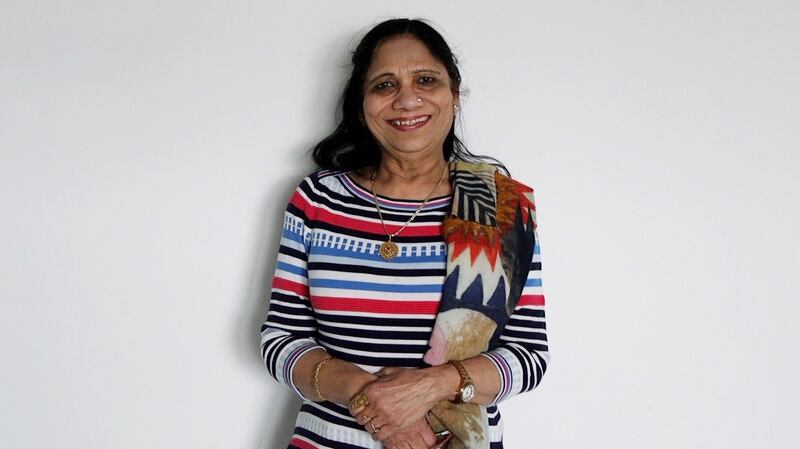
She moved here in 2014 with her medical consultant husband, having previously lived in Waterford and Limerick. “It was very quiet” when she first came, she says. But it’s also “very peaceful. People know each other quite well.”
Some of the young parents here are far away from their own families, so she is like their surrogate grandmother, dispensing home remedies for sore ears and colicky tummies.
Ask people in Adamstown what they like about living here, and they'll usually mention the sense of community first, then the quiet and the trains to the city centre. The well-stocked Londis shop also gets several thumbs up.
They won't talk about the pool or gym or the public gardens or the library because – to the frustration of many – they have yet to materialise. The community centre opened only a year and a half ago. The long-promised park is also being developed, according to David Browne of Savills, the agent selling homes on behalf of developer Quintain.
Fifteen years after the first stone was turned, Ireland’s newest designer town is still a work-in-progress. The promised 50 shops, nine restaurants and two public houses never materialised. The current retail offering comprises the Londis, a hair salon and a takeaway pizza place.
Development has begun to take off again. Since 2016, Savills has sold 619 houses here, mostly to first-time buyers, for an average of about €345,000. Other developers have delivered a further 700 units, bringing the total to about 3,000.
The bits that aren’t in place yet will come, Browne says. The first of two parks is due to be completed and open by autumn 2020. A second “should follow next year and that will include football pitches, cricket pitches and a sports pavilion”, says Browne.
Still, in some respects – at a time when the airwaves are full of political promises – Adamstown still hasn’t managed to shake off its image as one of the country’s most visible manifestations of political promises unfulfilled. For all the aspirations, today it still feels a lot like the derided “low-density, mono-use, roads-based development”.
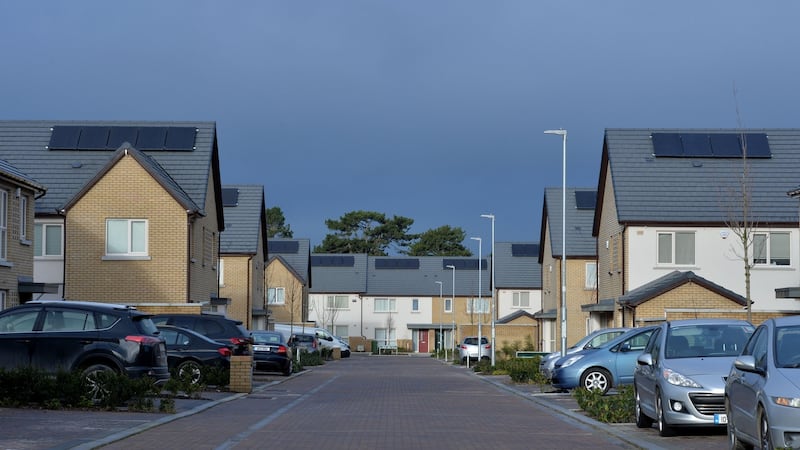
What it does have, though, is a community. The shelves in Londis are an insight into the community that now calls Adamstown home. Jacobs Kronung coffee from Germany sits on the shelf alongside Pierniczki biscuits. There's Ustronianka water from Moldova, Polish cherry-flavour Jezyki snacks and apple-mint Tymbark drinks, Iranian dates and boondi snacks from India.
“I don’t know if it’s the most diverse population in the country; certainly, it’s up there on the league table,” says Cooney. “We’ve lots of African nations, eastern Europeans, Latvians, Lithuanians, Polish. And a few original Irish here as well . . . It’s all new, so everybody is starting from new, including us here in the centre. We’re all in this together.”
Marta Cwiertnia, who is from Poland, arrives at the play group with her toddler son, Nicolas. The family moved here in April 2019. Although it's "still very quiet, there is a very good sense of community". But she's had to go elsewhere for some of the things that make life easier for young parents on maternity leave, like "breastfeeding groups, coffee shops".
Her street WhatsApp group knows The Irish Times is in town today, and all morning they’ve been chiming in with the issues they’d like to see addressed by whoever is in government after the election.
Many people here won’t have the right to vote. Those who do – including Cwiertnia’s Argentinian-born partner – feel an extra responsibility to vote for whoever can address the issues affecting their community.
“Train frequency,” she reads aloud from the WhatsApp group. “It would be nice if there were electric trains to go into town every 10-15 minutes instead of the commuter trains,” which run every 20 minutes.
A better GP service and more creches, people suggest. “Childcare, Garda station, shops, schools, transport and a GP service,” summarises someone else.
Ireland’s newest town has many of the same issues as some of its oldest. But where shops, Garda stations and GP surgeries are closing in rural towns as the population falls, they never arrived in Adamstown.
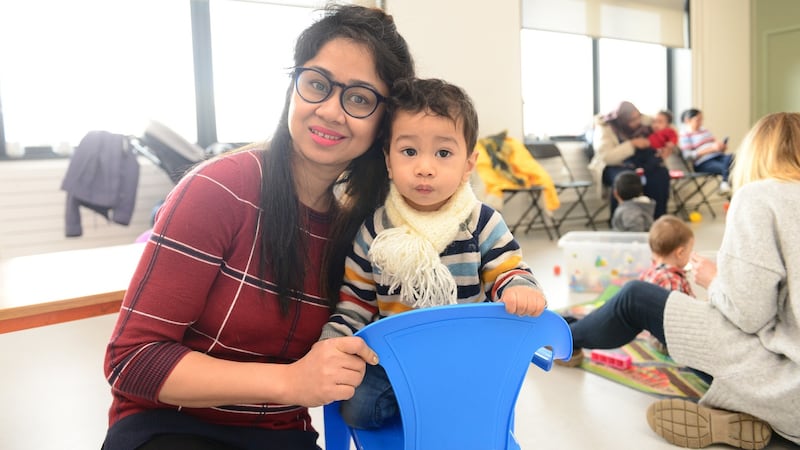
Interior designer Arunima Dutta is here with her son Kyan. Originally from India, she has been living in Adamstown since March. She likes the train and the proximity to Dublin city. But she wishes there was a playground for the children. As it is, they have to play on the road, and "driving is really difficult".
Sarah Muhammed from Sudan adds that there is not that much for her older children to do after school. "Like, there's nothing," she says.
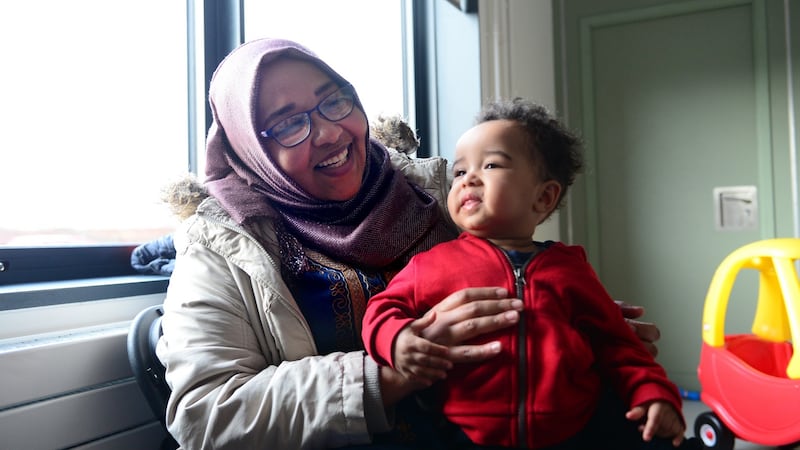
Bored teenagers sometimes lead to problems. Anti-social behaviour – in a place that has always been regarded as very safe – is a growing worry for some here. Cwiertnia was dismayed over the summer by several incidents near her home. There were, she says, “some attempted break-ins, big groups of teenagers fighting. I started questioning, ‘Is it safe to live here?’”
Adamstown train station, 4.30pm
One of the big advantages Adamstown has over other outer Dublin suburbs is its behemoth of a train station, which has five platforms, and about 100 spaces for bikes, only a few of which are in use today. The trains to Heuston (20 minutes away) and Grand Canal Dock (40 minutes) make it an attractive option for tech workers.
In the absence of a playground, Louisa Van Jaarsveld, originally from South Africa, likes to come here in the afternoons with two-year-old Ethan to watch the trains come in. It's much busier than when she moved here six years ago. "Since the community centre opened, things have turned around."
The diversity offered by Adamstown is a positive for her. But she’d like better, more direct buses to the city, and more shops and cafes.
The first evening commuter trains start pulling in, each one disgorging a handful of commuters onto the windswept platform. One of the first to disembark is Brian Salter, who bought his first home here three months ago, when his wife was about to give birth to their first child. Baby Robbie was the reason they decided to give Adamstown a try.
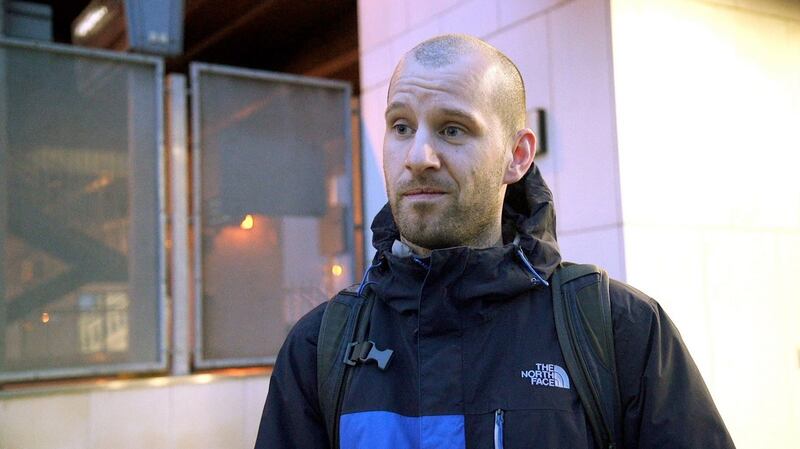
“We were out here loads of times, and we could tell by the people and the area that it was very family oriented . . . As you can see, it’s not fully finished yet, but I’m optimistic about what the future holds for Adamstown.”
When he’s thinking about how to vote in the election, he’ll be weighing up the needs of young families like his on a national level. “Where is the incentive for young families to have children, because the cost of childcare is through the roof. One kid? Yeah. Two?” He shakes his head.
Housing and homelessness are another issue. “Even though we have a house, and we’re humbled to have one, it took us a long time to get it. And there are a lot of people out there who aren’t as fortunate as me and my wife.”
Keith Leavy has been renting here for the past year and a half. It's "quiet in a good way", he says. Another bonus is that "it's massively diverse here. There are [people from] eight different countries living in 10 apartments" in his block.
For him, the rent crisis and a lack of coherence in transport planning are the key issues for the area. He doesn't drive and has had to turn down jobs in Blanchardstown, because there's no direct bus that will take him there.
"It would take me two hours to get to Blanchardstown by bus. It's a bit nuts. You can't get from Adamstown to Clondalkin by bus."
Has Adamstown lived up to the dream of a rural feel in an urban environment? “God no,” he says immediately. “There’s only one shop here, which is a joke. There was meant to be a leisure centre and a swimming pool [and] gym here. That’s never come to light.”
A dog park “would be massive for the area. The people who promised it when they first built it [the area], they didn’t come through on their promises. They’ve just been ramming people in.”
Adamstown Community Centre, 7pm
Two events are taking place this evening in the community centre: a martial arts class and a marginally less pugilistic election special.
Seven of the candidates in the four-seater Dublin Mid-West constituency, which encompasses Adamstown, have gathered for a live debate staged by Liffey Sound local radio. It’s a chance for local residents to come along and air their issues, but many of those present are wearing the badges or jackets of political parties. The accents are almost exclusively Irish – a reflection, perhaps, of the fact that, for all their strong views, many of Adamstown’s international residents don’t actually have a vote.
The debate kicks off with housing, and a question about recent reports that 220 units in the Shackleton development in Adamstown were sold in one block to an investment fund. The tax loopholes that encourage this are "frankly shameful", says the Green Party candidate, Cllr Peter Kavanagh.
The panellists discuss a new SDZ development at Clonburris, with potential for 8,000 homes to be built on 280 hectares of land, some of it bordering Adamstown. Independent Paul Gogarty and Sinn Féin's Eoin Ó Broin warn that the infrastructure must go in this time, along with the housing.
Pat Quinn and Theresa Quinn have come from nearby Lucan to hear what the candidates have to say. Theresa recalls all the early promises for Adamstown. "It has improved," she says thoughtfully. "But they built the houses, and left the people here in a vacuum really . . . They need to build the infrastructure first. Not just the houses."





















